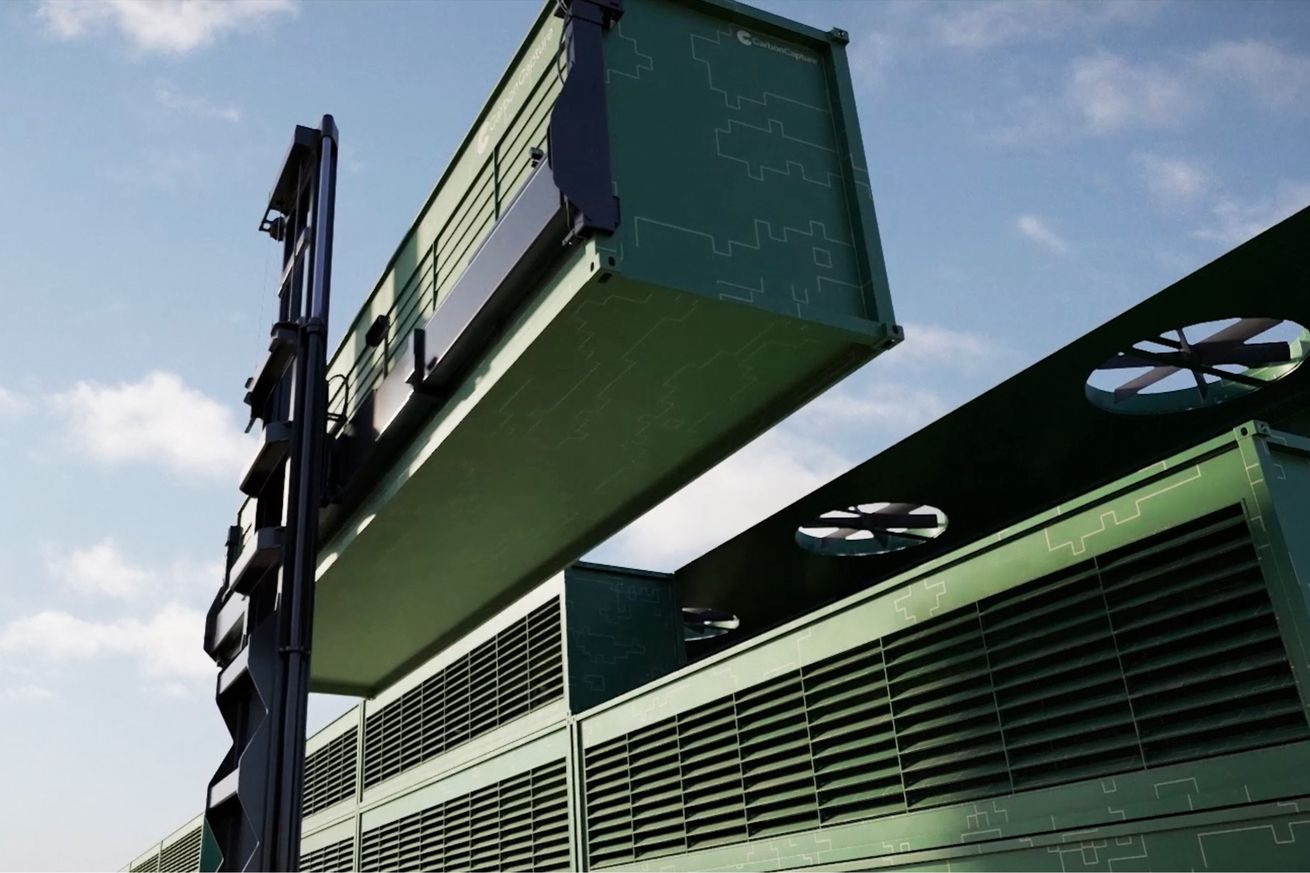
Microsoft inks another deal to capture and store its carbon emissions underground
Microsoft, an early backer of emerging technologies that take carbon dioxide emissions out of the atmosphere, has agreed to purchase carbon removal credits from Los Angeles-based startup CarbonCapture.
CarbonCapture has a massive facility called a direct air capture (DAC) plant in the works in Wyoming. Named Project Bison, the facility is projected to start running sometime in the latter half of 2024. The startup has developed modular technology that draws in CO2 from the ambient air so it can be stored underground, preventing the greenhouse gas from contributing to climate change.
The startup has developed modular technology that draws in CO2 from the ambient air so it can be stored underground
Microsoft has a goal of becoming “carbon negative” by 2030, meaning it would remove more CO2 pollution from the atmosphere than it generates through the use of fossil fuels. By 2050, Microsoft also plans to remove the equivalent of all its historical emissions since the company was founded. That’s a tall order, to say the least, considering carbon removal technology doesn’t yet exist at the scale needed for Microsoft to meet its climate goals.
“This agreement with CarbonCapture helps us move toward our carbon negative goal, while also helping to catalyze the growth of the direct air capture industry as a whole,” Microsoft’s carbon removal portfolio director Phillip Goodman said in the announcement.
Microsoft says its priority is to reduce how much pollution it creates in the first place, minimizing how much CO2 it would need to draw down from the atmosphere. But after falling for a few years, the company’s greenhouse gas emissions started to climb again in fiscal year 2021, according to its latest sustainability report. Microsoft was responsible for roughly 14 million metric tons of CO2 emissions that year, about as much as 35 gas-fired power plants might produce in a year.
The tech giant’s new agreement with CarbonCapture will only be able to address a fraction of those emissions. CarbonCapture expects to be able to capture and store around 10,000 metric tons of CO2 annually after deploying its first modules in Wyoming next year.
The modules look like vented shipping containers stacked on top of each other. The equipment can filter out about 75 percent of the CO2 in the air that passes through them. This generates concentrated streams of CO2 that would then need to be piped some 12,000 feet underground into saline aquifers. Another startup based in Dallas, Frontier Carbon Solutions, is partnering with CarbonCapture to permanently store the CO2 on-site.
“This is a big deal for us,” CarbonCapture CEO and CTO Adrian Corless tells The Verge. Its purchase agreement with Microsoft is larger than the sum of the startup’s deals with other, smaller clients put together, according to Corless. “This is just an important, you know, validating step for our business,” he says.
Neither company is divulging specific details yet when it comes to how much carbon dioxide Microsoft wants to remove or how much that will cost. Microsoft has also purchased carbon removal credits from Swiss company Climeworks for an undisclosed amount.
By 2030, CarbonCapture plans to be able to remove 5 million metric tons of carbon dioxide a year at its Wyoming facility in Sweetwater County. That alone is a big endeavor; the global capacity for carbon removal today is still just .01 million metric tons of CO2 annually. Cost has so far been a big limiting factor for the industry. The price per metric ton of captured CO2 can be upwards of $600 per metric ton.

